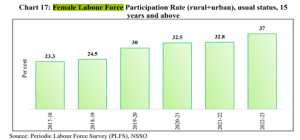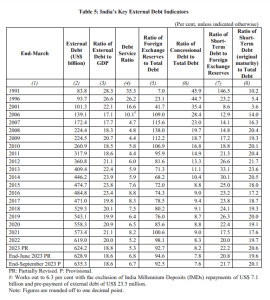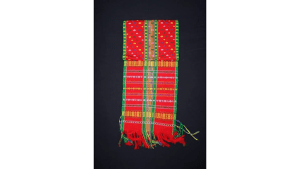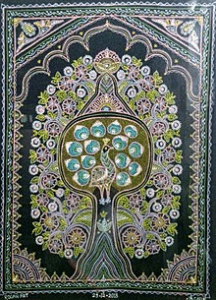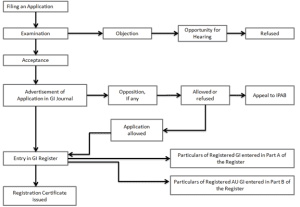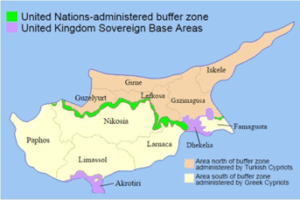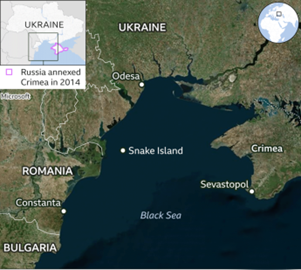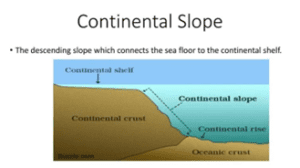WSDP Bulletin (06/03/2024)
(Newspapers, PIB and other important sources)
Prelim and Main
1. North America’s Great Lakes, Earth’s largest freshwater store, record ‘historically low’ ice levels READ MORE
2. Frog with a mushroom sprouting from skin discovered in Western Ghats, researchers
3. Arctic could go without ice for first time by 2030 under all emission scenarios: Study READ MORE
4. AI has a big and growing carbon footprint, but algorithms can help READ MORE
5. As Indian troops pull out, Maldives signs defence pact with China READ MORE
6. Meet MethaneSAT, a satellite which will ‘name and shame’ methane emitters READ MORE
7. What is India’s disability law; how accessible are govt buildings to PwD? READ MORE
8. Erythraean Sea: Why Rubymar’s sinking in the southern Red could be an environmental catastrophe READ MORE
9. Excess snowfall, avalanche in Himachal block Chenab river flow READ MORE
Main
GS Paper- 1
1. Green jobs and the problem of gender disparity READ MORE
2. Rising against odds: The resilience of women entrepreneurs READ MORE
3. Exploring linguistic identities amid pluralism READ MORE
4. Tackling mental health crises in medical students READ MORE
5. At peak value of 2°C above average sea surface temperature, 2023-24 El Nino among strongest on record READ MORE
6. Most of Greater Horn of Africa to see excess rain till May thanks to El Nino, climate change READ MORE
GS Paper- 2
POLITY AND GOVERNANCE
1. Law and disorder: On Manipur, its ethnic polarisation and its law and order READ MORE
2. Deprivileging bribe: On overruling the majority verdict in P.V. Narasimha Rao vs State READ MORE
3. No privilege to be corrupt READ MORE
4. A wrong ruling overturned READ MORE
5. Reinvigorating deliberative democracy in India READ MORE
SOCIAL ISSUES
1. What ASER 2023 reveals about the gender gap in confidence READ MORE
2. An insidious threat to India’s nutrition security READ MORE
INTERNATIONAL ISSUES
1. With Shehbaz Sharif at its head, a vulnerable new government forms in Pakistan READ MORE
2. The limits of India-US strategic partnership READ MORE
GS Paper- 3
ECONOMIC DEVELOPMENT
1. The dynamics of household consumption READ MORE
2. Rocky road ahead at WTO READ MORE
3. Reimagine MSP regime to secure farm future READ MORE
4. GDP growth robust, but sluggish consumption is worrisome READ MORE
5. WTO deadlock over agricultural subsidies READ MORE
ENVIRONMENT AND ECOLOGY
1. Modernisation threatens livelihoods in the Himalayas READ MORE
2. Mountains of plastic are choking the Himalayan States READ MORE
SCIENCE AND TECHNOLOGY
1. A vaccine that prevents six cancers READ MORE
INTERNAL SECURITY
1. India and Israel’s counterterror experiences and the idea of ‘defeating’ terror groups READ MORE
DISASTER MANAGEMENT
1. Mitigating risks in infrastructure development READ MORE
GS Paper- 4
ETHICS EXAMPLES AND CASE STUDY
1. Probity in public life READ MORE
2. Two kinds of renunciation READ MORE
3. Bulldozer tyranny, in the name of law READ MORE
Questions for the MAIN exam
1. Although gender gaps in school enrolment have fallen over the years, girls still lag behind in terms of access to and use of digital technologies. Comment on the statement in the light of recent ASER Survey report.
2. Gram Sabhas, notwithstanding many challenges, have brought a semblance of deliberative democracy in India. Critically examine.
3. The WTO Ministerial Conference has failed to make progress and continues to struggle to foster free and fair trade on key issues. Examine in the light of recent meeting outcomes.
4. The Supreme Court related to the stripped of immunity judgement is a significant step towards curbing the rampant role of money power in horse-trading and other legislative malpractices. Critically Analyse.
5. In a welfare state, the government should act as an ideal employer and pay decent pensions to its employees, setting a good example for the private sector. Analyse whether the govt should revive OPS?
QUOTATIONS AND CAPTIONS
- The potential for such misuse is neither enhanced nor diminished by recognising the court’s jurisdiction to prosecute a member for bribery.
- Increasing women’s representation in green jobs will lead to benefits such as boosting a low-carbon and environmentally sustainable economy.
- As India embraces a green transition, empowering women and advancing gender equity in climate actions will be one of the keys to unlock the co-benefits of a low-carbon and environmentally sustainable economy.
- Increasing women’s representation in green jobs can address the gender biases in the Indian labour market and improve women’s labour force participation rates.
- There is need to build evidence on the present and future impact of low-carbon transitions on women workers and entrepreneurs while considering the hidden and invisible roles played by women across different sectors and geographies.
- Gender-focused financial policies and products catering to the requirements of women entrepreneurs can spur their ability to enter the green transition market.
- Bringing in more women into leadership positions to incorporate gender-specific needs in low-carbon development strategies can promote women’s integration in green jobs.
- A gender-just transition demands a multi-pronged strategy that focuses on employment, social protection, reduces the burden of care work, and enables skill development.
- The Household Consumption Expenditure Survey 2022-23 is a testament to India’s commitment to a resilient statistical system embracing both tradition and innovation.
- Policy flexibility is crucial to prevent market prices from dipping below MSP due to cheaper imports.
- With increasing urbanisation pressure, there was a need to step up investment in green transport solutions.
- Although gender gaps in school enrolment have fallen over the years, girls still lag behind in terms of access to and use of digital technologies.
- The US-India relationship is set to be one of the most defining ones of the 21st century.
- India is the only country which has a scale matching China’s and can emerge as its peer rival. But it has always been clear that India is unlikely to participate in possible hostilities which might erupt between the US and China.
- With crores in damages and a tragic loss of lives, there is an urgent need for sustainable infrastructure strategies.
- The recent infrastructure incidents and challenges faced should serve as a compelling call to action, prompting the nation to revisit its construction practices.
- At the WTO Ministerial Conference, India stood firm on its stance on public stock-holding programme, drawing strong opposition from the developed countries.
- Development is simultaneously robbing the rural population of their livelihoods, demanding timely interventions and policies that allow both development and local employment in the villages.
- Gram Sabhas, notwithstanding many challenges, have brought a semblance of deliberative democracy in India.
ESSAY TOPIC
- Passivity is fatal to a soldier.
50-WORD TALK
- An important opportunity to reform medical education has now been deferred by two years by the health ministry for being ‘unrealistic’. The National Medical Commission had introduced stricter norms for colleges, courses and MBBS seats last year. It’s a pity because the new measures would have improved standards and quality.
- Calcutta HC Justice Abhijit Gangopadhyay’s decision to join BJP right after stepping down from office revives the debate on having a cooling-off period for judges. A political role this soon after resignation affects the judiciary’s credibility, undermines public confidence. It’s important that the judiciary be seen as a non-partisan institution.
Things to Remember:
- For prelims-related news try to understand the context of the news and relate with its concepts so that it will be easier for you to answer (or eliminate) from given options.
- Whenever any international place will be in news, you should do map work (marking those areas in maps and exploring other geographical locations nearby including mountains, rivers, etc. same applies to the national places.)
- For economy-related news (banking, agriculture, etc.) you should focus on terms and how these are related to various economic aspects, for example, if inflation has been mentioned, try to relate with prevailing price rises, shortage of essential supplies, banking rates, etc.
- For main exam-related topics, you should focus on the various dimensions of the given topic, the most important topics which occur frequently and are important from the mains point of view will be covered in ED.
- Try to use the given content in your answer. Regular use of this content will bring more enrichment to your writing.

